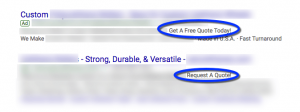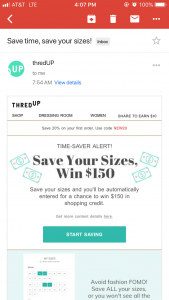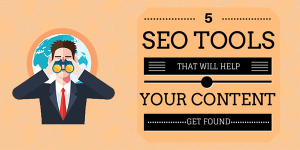Marketers and small business owners alike have a solution for the ever-changing rules and algorithms of search and social sites: advertising.
But what happens when paid media becomes blocked media?
Oh yes, ad blocking is a real thing!
That’s the bad news. The good news is there are ways around it.
Let’s discuss.

What Does ‘Ad Blocking’ Mean?
Let’s start with what blocked media, or ad blocking means.
Digiday has a nice explanation:
“Ad blocker” is a catchall term for any kind of software or hardware that removes ads from a webpage. For most people, it takes the form of browser extensions such as AdBlock or Adblock Plus, which are nearly effortless to install on Google’s Chrome and Mozilla’s Firefox browsers.”
Ad blocking can include web pages, but it can also include embedded media, social media or widgets, and any sort of tracking beacon.
Perhaps the most recognizable ad blocker you’ve seen is on Facebook, where you have the easy ability to hide unwanted media or ads:

As you can see in the example above, when I hit the drop-down arrow next to the “Like Page” button, a menu appears where I can choose “Hide ad” (highlighted in yellow in the above example).
This allows me to block all future ads from YP for Business.
When I click this option, Facebook attempts to collect more feedback from me (the user or ad blocker):

But, Brooke, why do people want to block my ads?
There are lots of reasons, really.
Put yourself in their shoes — ads can be annoying!
People and companies block ads to help with:
- The overall web experience
- Privacy
- Load times
- Security
That’s the bad news. And I promised you good news!
4 Ways To Combat Blocked Media
The easiest way to combat blocked media is to make sure all of your eggs are placed haphazardly in the advertising basket.
There are plenty of lead generators out there, and not all of them center around paid media.
Let’s look at a few of the workarounds for blocked media.
1) Ask!
You’ve probably seen many companies or brands asking users to “whitelist” their site. This ensures your ads will run.
2) The “I won’t show you mine if you don’t let me show my ads” approach.
Some sites are blocking their content altogether from sites that have ad blocker software enabled.
According to Marketing Insider Group, with “content blocking” publishers can simply choose to not let people with ad blockers enabled to view their content; a tactic The Washington Post is testing out.
3) Use native or sponsored content.
Native advertising — not to be confused with content marketing — is another way to combat blocked media.
CMI gives this beautiful breakdown:
- If you pay for placement, it’s advertising.
- If you pay for placement of valuable, relevant content in a format similar to the third-party site, it’s native advertising.
- If you don’t pay for placement, the content is not advertising.
4) Don’t ignore your other channels!
Yes, advertising is a very cost-effective and black-and-white way to capture leads. But there are other options.
Consider this:
- BuzzFeed generates 52% of its views away from its own website with SnapChat, YouTube and Facebook video
- SnapChat was the fastest growing social platform of 2014
- Foursquare was able to accurately predict how many new iPhones were sold based on location data
Source: Communications Trends Report 2016
And even if you’re not into “being social,” there’s always lead magnets and lead boxes placed around your site.
Using Your Website To Combat Blocked Media
Admittedly, I’m not a huge proponent of advertising, though hiring Ann Marie (our oh-so-AMAZING social & advertising strategist) has taught me GOBS about the benefits of using ads to boost your brand.
I personally like using the B Squared Media site as a way to capture leads.
How, you ask?
Using lightboxes, pop-ups, bars and other lead capture forms to snag new leads. [Pop-ups and other forms convert better than traditional sign-up forms!]
Here are 8 ways to fish for leads the old-fashioned way:
- Use a pop-up box
- Use an “exit” box (it opens when a user gets ready to leave your site)
- Use a slide-in box (you can set these to appear after so many seconds)
- Use HelloBar to capture leads
- Offer a “lead magnet” (we offer a ROI scorecard template for free when you sign up for our monthly newsletter with the tool LeadPages)
- Use the sidebar of your site or blog to capture emails
- Create dedicated pages with offers, freebies and resources
- Use a subscribe box at the end of each blog post (we do this with ConvertKit!)
Are you worried about your paid media and ads becoming blocked media? Weigh in on this hot topic below OR share your ideas for capturing leads without the use of ads!
Digital & Social Articles on Business 2 Community(142)
Report Post







